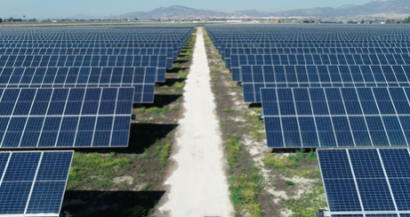
Endesa has begun to combine renewable generation with the use of agricultural land in these four solar plants, within the framework of an agrivoltaic project that, according to Roberto Andrés, head of environmental innovation at Endesa, "not only focuses on maintenance or recovery of agricultural or livestock activities where a photovoltaic plant has been built or is planned to be built." It also pursues, he adds, "the recovery, promotion or improvement of local ecosystems and habitats, focusing efforts on the recovery of the soil and on those species that are protected or vital for their maintenance or the improvement of crops, such as pollinating species. ”
The company has selected specific activities for each site, assessing factors such as the existing ecosystem, the traditional use of the land in each site, the type of soil and the availability of water resources, all conditioned by weather conditions.
To evaluate the agronomic viability of the solutions proposed in each plant, a team of Endesa experts visited the sites gathering the information necessary for the correct implementation of the project: site conditions, available water resources, nearby farmers interested in the crop and / or in grazing, information on local cooperatives and specific traditional crops.
"But it is not only necessary to take into account the type of crop, but also it is necessary to analyze the impact that any of the agrivoltaic activities may have on the operation and maintenance of a photovoltaic plant," the company said.
Endesa has already planted in Totana, with the help of the Murcian Institute for Agricultural and Food Research and Development (IMIDA), species such as red pepper, broccoli, artichoke, thyme and pitaya. The Las Corchas photovoltaic plant in the Sevillian town of Carmona will be the next to have new plants among photovoltaic panels. In the case of Extremadura, in the hands of the Extremadura Agrifood Technology Center (CTAEX), it will plant aromatic and medicinal plants such as sage, oregano, rosemary, lavender or coriander for cosmetic and food use in the coming months.
Endesa and CTAEX will also plant different species in the Augusto and Valdecaballero plants in the province of Badajoz this spring. In the first, horticultural crops such as aubergine, broccoli, cauliflower or zucchini, along with legume species such as alfalfa to promote biodiversity. In Valdecaballeros, species such as the prolific prairie will be planted for animal use and aromatic and medicinal plants for cosmetic and curative use.
With this initiative, the utility wants, in addition to improving the environmental footprint, to generate value for the local community through shared use of the land in large photovoltaic plants, thus enhancing the long-term sustainability of the projects.

